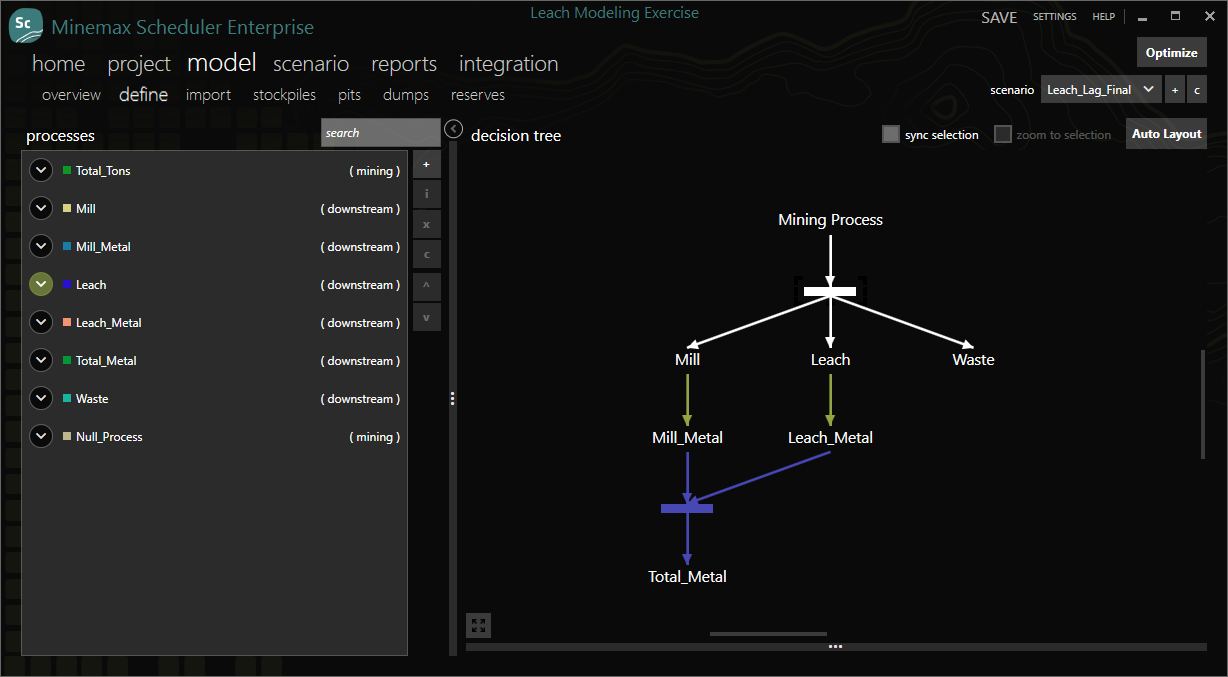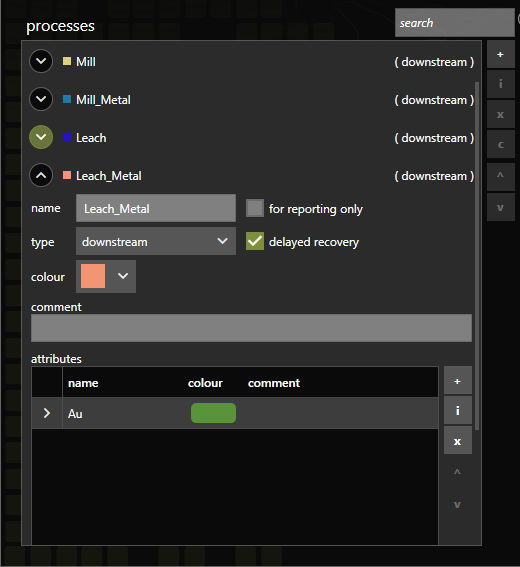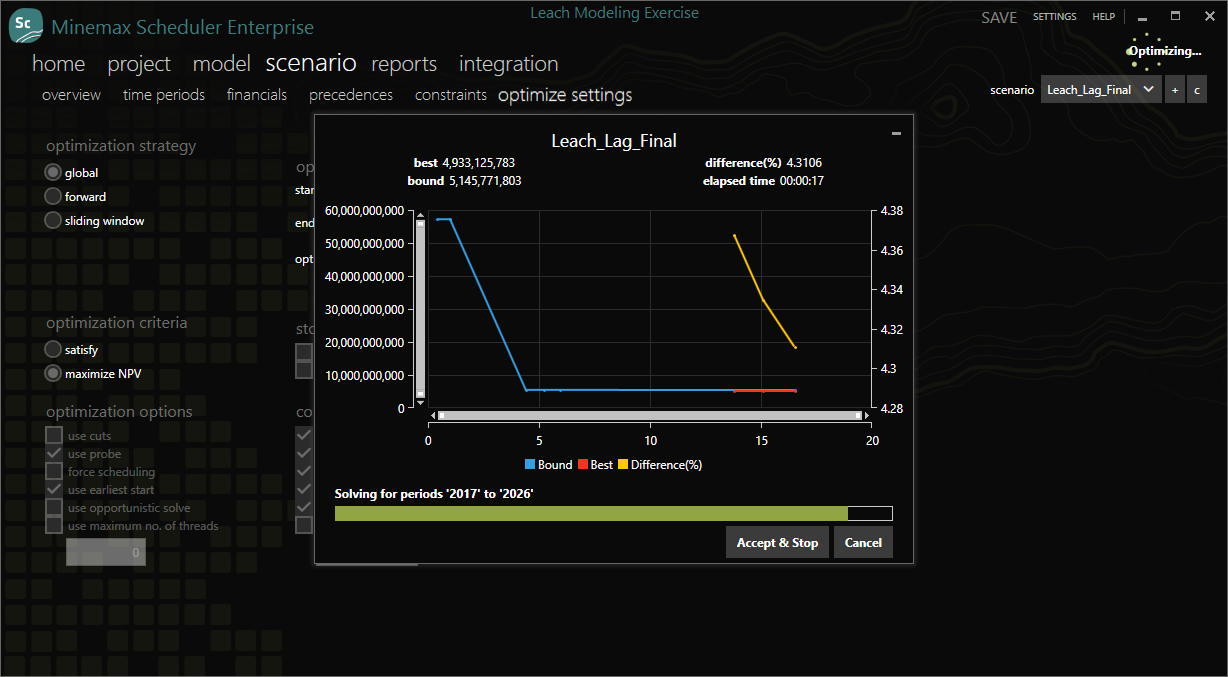How do you handle leach processing in your strategic mine plan? Do you use a spreadsheet to manually adjust your schedule to account for leach lag? Are you tired of all that work and still not convinced that you have the best result? If so, we may have some good news for you.
We all know that when a leach pad is used, the metal production is delayed – sometimes for several years. If we want to account for that in our schedule and our financials, we need to model it in the software before we optimize. Tweaking the schedule after the fact is inefficient and prone to human error. Furthermore, by manually adjusting a schedule after the optimization is complete, you may find that your result is no longer compatible with the dynamics of your model or the operational realities you are trying to achieve.
In this article, we ‘ll show you a new, easy way to model leach lag in Minemax Scheduler strategic mine planning software. This new functionality lets you include time-delayed leach metal production within your schedule optimization so you can find a practical and achievable schedule with no need for further manual schedule adjustments.
Interested? It won’t take long – modeling time-delayed leach recoveries in Minemax Scheduler is straightforward and quick.
Introducing the example
We’ll use a simple example of a gold mine operation with one mill and one leach pad. The ore delivered to the mill produces metal in the same year of mining whereas the metal production is delayed following a 5-year leach cycle: Year 1: 30% recovery, Year 2: 30% recovery, Year 3: 20% recovery, Year 4: 15% recovery and Year 5: 5% recovery.
Defining the model
In the screenshot below, you can see this example modeled in Minemax Scheduler.

There are processes created for Mill, Leach and Waste tonnes which are defined as alternative decisions. This means Minemax Scheduler decides based on the economic value of each block whether material is sent to mill, leach or to a waste dump. When material is delivered to mill and leach then mill metal and leach metal are produced and the total metal is the sum of these two products.
Now let’s have a look at how to include time-delayed recoveries in Minemax Scheduler. The process is actually very simple.
Including time-delayed recoveries
On the define screen, if you click on the ‘Leach_Metal’ process in the list of processes on the left, you’ll notice a check box called ‘delayed recovery’. This little box is all you need to enable time-delayed recoveries for the ‘Leach_Metal’ process.

Once the ‘delayed recovery’ check box is checked, you can select the ‘Leach_Metal’ process on the ‘delayed recoveries’ screen under financials in the scenario menu. The screenshot below shows a complete entry of leach recoveries for our example. It only took a few seconds to set this up.

Minemax Scheduler uses these leach recoveries combined with the financials defined on the ‘cost & revenue’ screen to optimize the schedule.
Optimizing the schedule with leach lag
While the schedule optimization is running, all aspects of your strategic mine schedule are simultaneously optimized while meeting all your precedences and constraints. Minemax Scheduler integrates trucking, the waste dump sequence, stockpiles, cut-off and cut-over grades, material destinations, capex and now time-delayed leach recoveries.

After the optimization is finished, we can compare leach ore delivered to the leach pad (the chart on the left) with metal recovered from the leach pad (the chart on the right) stacked by pit.

Let’s take pit 5 (coloured in green) as an example. Here, ore is mined and delivered to the leach pad in 2022, but metal is recovered from the leach pad over 5 years following the defined leach cycle. You can examine the remaining pits and see the same pattern.
The result is a practical and achievable schedule including time-delayed leach recoveries. There’s no need for any time consuming post-processing. In the end, you have more time to evaluate additional scenarios, and greater confidence that you are giving accurate data to your management.
Summary
We’ve shown you how to model delayed leach recoveries in Minemax Scheduler so they are processed as a part of the schedule optimization, giving you a practical and achievable schedule. It’s easy, there’s no messy and troublesome post-processing, and you have the guarantee that the schedule achieves the best NPV.
Want to learn more? Watch this movie about Leach Modeling in Minemax Scheduler or contact Minemax for an online or in-person demonstration.